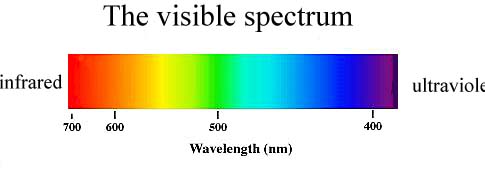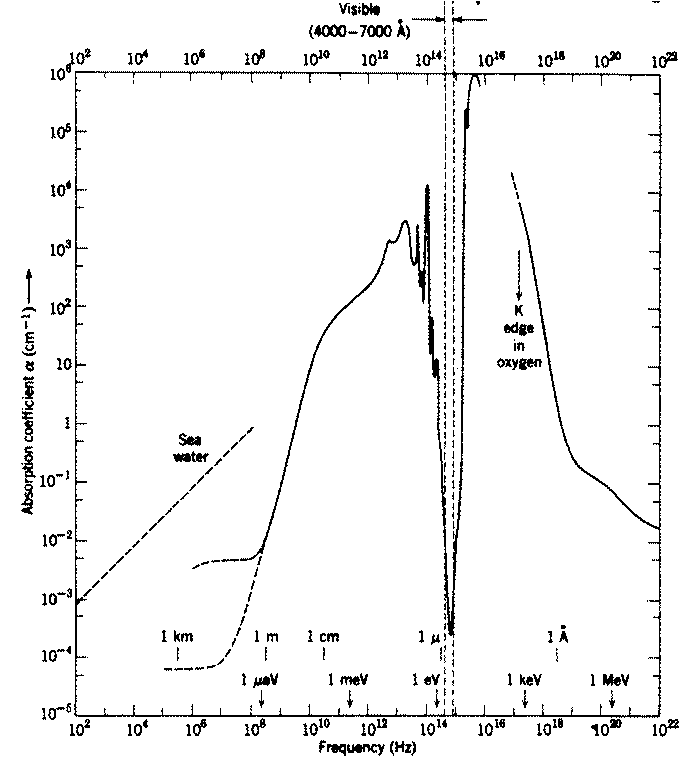
Visible spectrum
A small portion of the electromagnetic spectrum -- wavelengths from approximately 400 to 700 nm -- is visible by human eyes. Electromagnetic radiations with shorter wavelengths than visible are called ultraviolet, X-rays or gamma rays progressively. Electromagnetic radiations with longer wavelengths than visible are called infrared, microwaves or radio waves progressively. Microwaves have wavelengths on the order of centimeters, while radio waves are on the order of meters.

Our eyes respond differently to different wavelengths (via the cones in the retina), so we have different names for different regions of visible wavelength. You see them spread out in order in a rainbow (because the index of refraction of water varies slightly with wavelength): Red, Orange, Yellow, Green, Blue, Indigo, Violet. Elsewhere our eyes generally receive a mixture of wavelengths, so a rich vocabulary of color names exists: white, grey, brown, pink, magenta, mauve, taupe, puce,...
The reason humans have vision in this narrow part of the spectrum is presumably related to the fact that the peak of the power spectrum of light from the sun is in that region. (Perhaps nocturnal animals tend toward a slightly different range -- I don't know.) Another factor that dictates the visible spectrum has to do with the opacity of water. According to the graph below, light only penetrates sea water easily in a narrow band of wavelengths that corresponds rather closely to the visible range. Note that the scales in the graph are logarithmic; outside the the visible range, the absorption quickly becomes many thousand times stronger. It is interesting to speculate on whether this results from our visual system having evolved in water; or whether (my guess) it is because absorption of other wavelengths within the liquid (approximately sea water) of the eye make it easier to make a large and sensitive eye at the visual wavelengths. Some creatures, e.g. bees, are known to see ultraviolet light; but they have much smaller eyes which would be less affected by the absorption.
